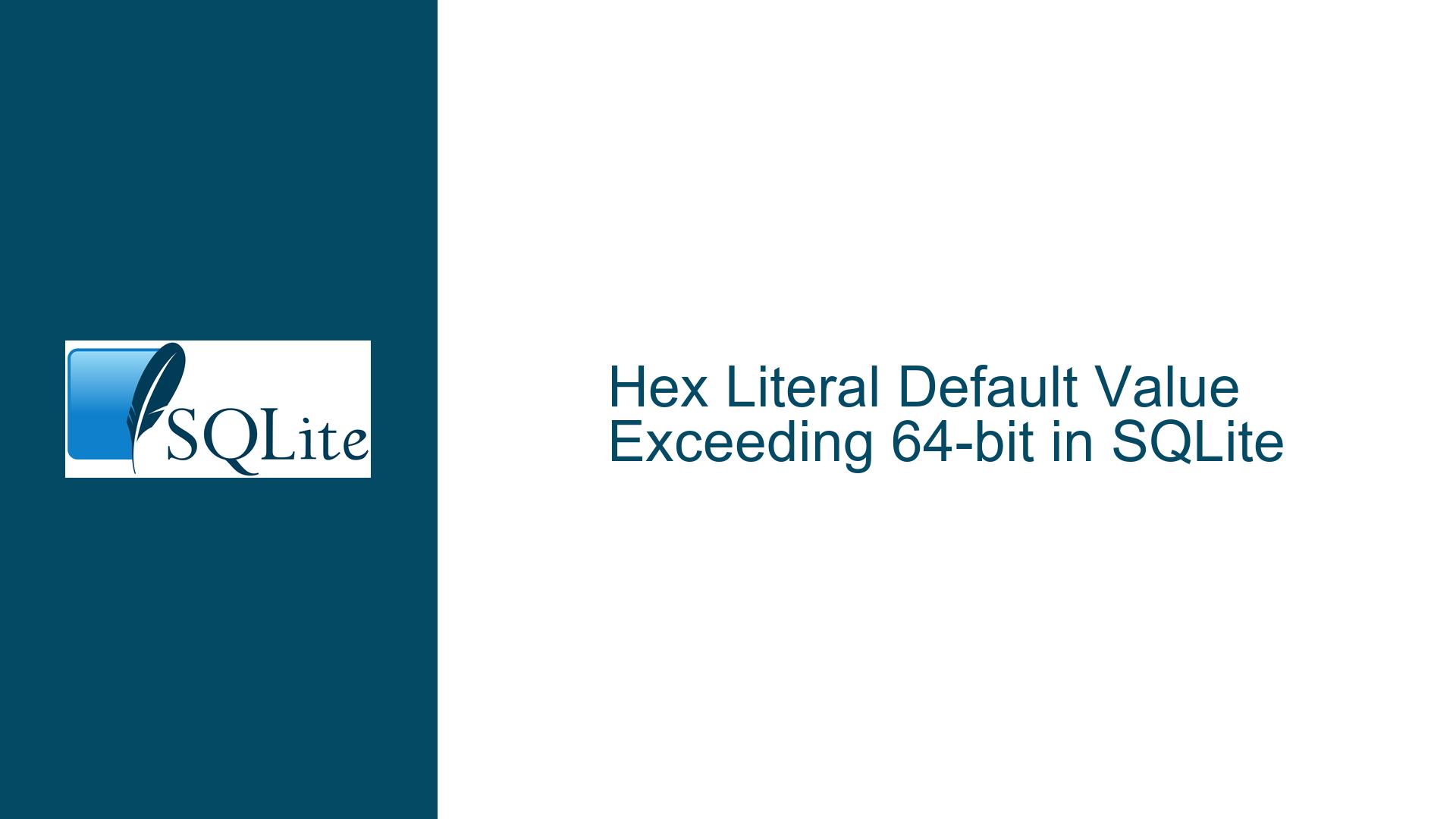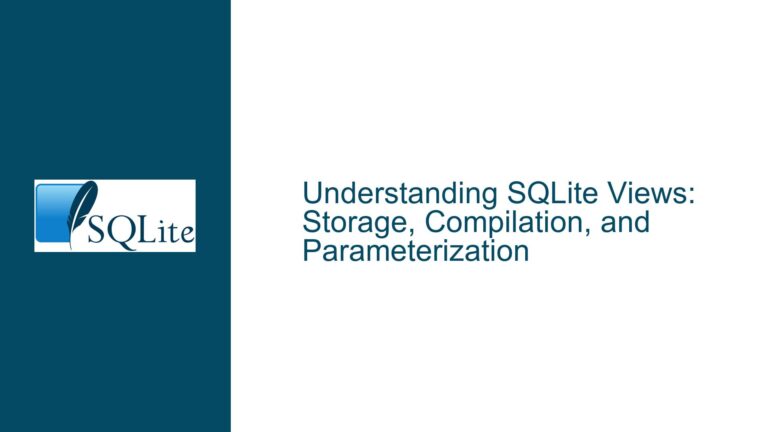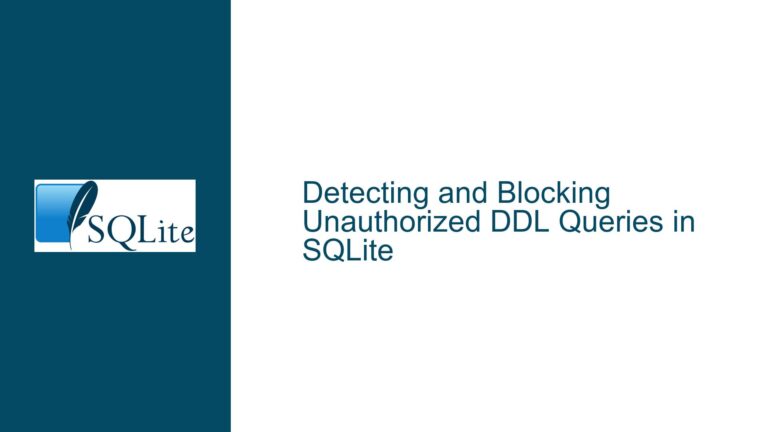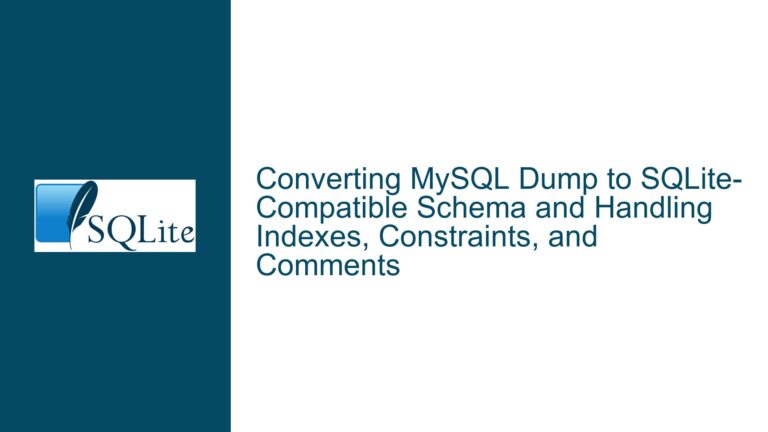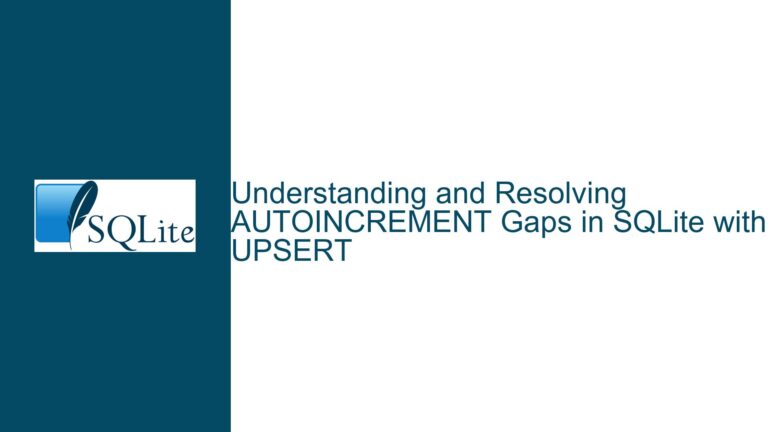Hex Literal Default Value Exceeding 64-bit in SQLite
Hex Literal Default Value Interpretation in SQLite
The issue at hand revolves around the behavior of SQLite when handling hex literals as default values in column definitions, particularly when these literals exceed the 64-bit integer range. SQLite’s interpretation of such literals during table creation (CREATE TABLE) or schema modification (ALTER TABLE ADD COLUMN) does not immediately raise an error, but it leads to unexpected behavior during data insertion (INSERT). Specifically, while the table creation or column addition succeeds, attempting to insert a new row with the default value fails with a parse error, indicating that the hex literal is too large. This behavior is inconsistent with the expectation that such literals should be flagged as invalid during the schema definition phase, similar to how other malformed literals (e.g., 0xABCDEFG or 127.0.0.1) are handled.
The core of the problem lies in SQLite’s tokenizer and its handling of numeric literals. According to the SQLite documentation, numeric literals that resemble integers but exceed the 64-bit range are treated as real numbers. However, this interpretation does not account for hex literals that exceed the 64-bit range, leading to the observed inconsistency. The issue is further complicated by the fact that pre-existing rows in the table are interpreted differently from new rows, with the former being treated as bare strings and the latter causing a parse error.
Tokenizer Behavior and Hex Literal Parsing
The root cause of this issue can be traced to SQLite’s tokenizer and its handling of hex literals. When a hex literal is provided as a default value in a CREATE TABLE or ALTER TABLE ADD COLUMN statement, the tokenizer does not immediately validate the literal against the 64-bit integer range. Instead, it allows the literal to be stored as part of the schema definition. This behavior is consistent with SQLite’s general approach to schema definition, where constraints and validation are often deferred until data manipulation operations (e.g., INSERT, UPDATE) are performed.
However, this deferred validation leads to a discrepancy in how the hex literal is interpreted. During the SELECT operation, the literal is treated as a bare string for pre-existing rows, which is why no error is raised when querying the table. In contrast, during an INSERT operation, the literal is parsed as a numeric value, and since it exceeds the 64-bit range, a parse error is raised. This discrepancy highlights a gap in SQLite’s handling of hex literals, where the tokenizer’s leniency during schema definition conflicts with the stricter validation during data manipulation.
The issue is further compounded by the fact that SQLite’s documentation on numeric literals does not explicitly address the handling of hex literals that exceed the 64-bit range. While the documentation states that numeric literals outside the 64-bit range are treated as real numbers, it does not specify how hex literals are handled in this context. This lack of clarity contributes to the confusion and unexpected behavior observed in the examples provided.
Resolving Hex Literal Default Value Issues
To address the issue of hex literals exceeding the 64-bit range in default values, several steps can be taken to ensure consistent behavior and prevent parse errors during data insertion. The first step is to validate hex literals during schema definition, ensuring that any literal exceeding the 64-bit range is flagged as invalid at the time of table creation or column addition. This approach aligns with the expectation that schema definitions should be validated upfront, rather than deferring validation to data manipulation operations.
One way to implement this validation is to modify SQLite’s tokenizer to explicitly check the size of hex literals during schema definition. If a hex literal exceeds the 64-bit range, the tokenizer should raise a parse error, similar to how it handles other malformed literals. This change would ensure that schema definitions containing invalid hex literals are rejected immediately, preventing the inconsistency observed in the examples.
Another approach is to provide clearer documentation on the handling of hex literals in SQLite, particularly in cases where they exceed the 64-bit range. The documentation should explicitly state that hex literals are treated as numeric values and are subject to the same range constraints as other numeric literals. This clarification would help developers understand the limitations of hex literals and avoid using them in contexts where they may exceed the 64-bit range.
In addition to these changes, developers can take proactive steps to avoid encountering this issue in their applications. One such step is to avoid using hex literals as default values in schema definitions, particularly when the literals may exceed the 64-bit range. Instead, developers can use alternative approaches, such as storing the literal as a string and converting it to a numeric value as needed. This approach ensures that the literal is handled consistently across all operations, without the risk of parse errors during data insertion.
Another proactive measure is to validate hex literals in application code before using them in SQLite queries. By performing this validation at the application level, developers can ensure that any hex literals used in schema definitions or data manipulation operations are within the 64-bit range, preventing the issue from arising in the first place. This approach also provides an additional layer of safety, as it allows developers to handle invalid literals in a way that is appropriate for their specific use case.
In conclusion, the issue of hex literals exceeding the 64-bit range in default values highlights a gap in SQLite’s handling of numeric literals. By validating hex literals during schema definition, providing clearer documentation, and taking proactive measures in application code, developers can ensure consistent behavior and avoid parse errors during data insertion. These steps not only address the immediate issue but also contribute to a more robust and reliable use of SQLite in applications.
